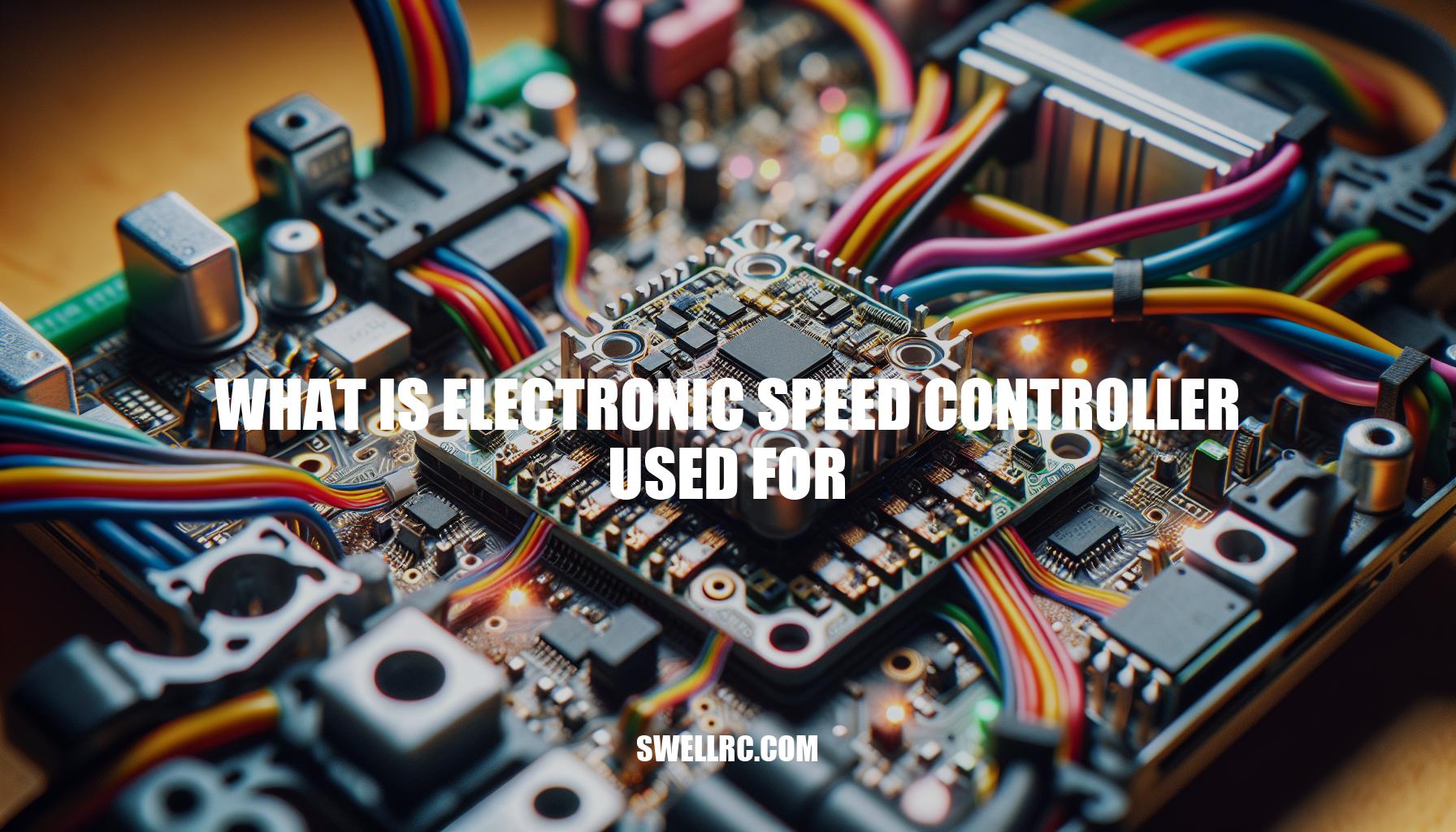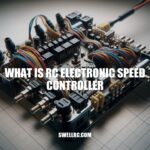What Is Electronic Speed Controller Used For: A Comprehensive Guide
Imagine you’re flying a drone, smoothly gliding it through the open skies, making it zip and zoom in precise directions, all at your command. Have you ever wondered about the pivotal gizmo that makes it all possible? Allow me to introduce you to the Electronic Speed Controllers (ESCs). Acting as the backbone of many modern electronic marvels, including your drones, electric bicycles, and even radio-controlled cars, ESCs are responsible for that precise handling you so enjoy. What’s the magic behind them, you ask? Well, it’s no sorcery, but the straightforward task of their conscientious control over the speed and direction of the motors. So next time when you rev up your remote to roll that fancy little drone, remember, it’s the humble ESC sitting inside, ensuring a seamless operation. I know, it’s pretty cool!
How Does an ESC Work?
Let’s dive into the question of ‘what is electronic speed controller used for’ by understanding how these smart devices work. At the heart of any electronic speed controller, you’ll find a maverick component known as a microcontroller. Quite like the conductor of an orchestra, the microcontroller takes in signal inputs from a remote control or a central computer. It interprets these signals and, much like a musical maestro swaying a baton, directs the motors to follow the received commands, controlling their speed and direction.
So, how does this happen exactly? A component called an oscillator paces the rhythm, sending out signals in the form of electrical impulses. Picture the oscillator as an unrelenting metronome clicking out a steady tempo. Meanwhile, an integrated amplifier magnifies these signals. Now, if you imagine the amplifier as a charismatic lead vocalist, you can get a sense of its role in our ESC band – It takes the rhythm established by the metronome-like oscillator and amplifies it to drive the motors into action.
In turn, these electronic components work in unison to control the movement of motors found in devices like drones, electric bikes, and other remote-controlled gadgets. This is similar to how different website elements interact to bring a webpage to life. For example, HTML focuses on structuring content presentation similar to how an ESC manages the running of motors, while CSS styles and jazzes up the website akin to how an ESC incorporates power for precision control.
Hence, the electronic speed control system serves as the unseen genius behind your favorite tech toys, pulling strings behind the scenes to keep things running smoothly. Now that’s one we could all tune in for! Remember, an understanding of how ESCs work can serve you immensely, especially if you’re into DIY projects or are an enthusiast of radio-controlled gadgets.
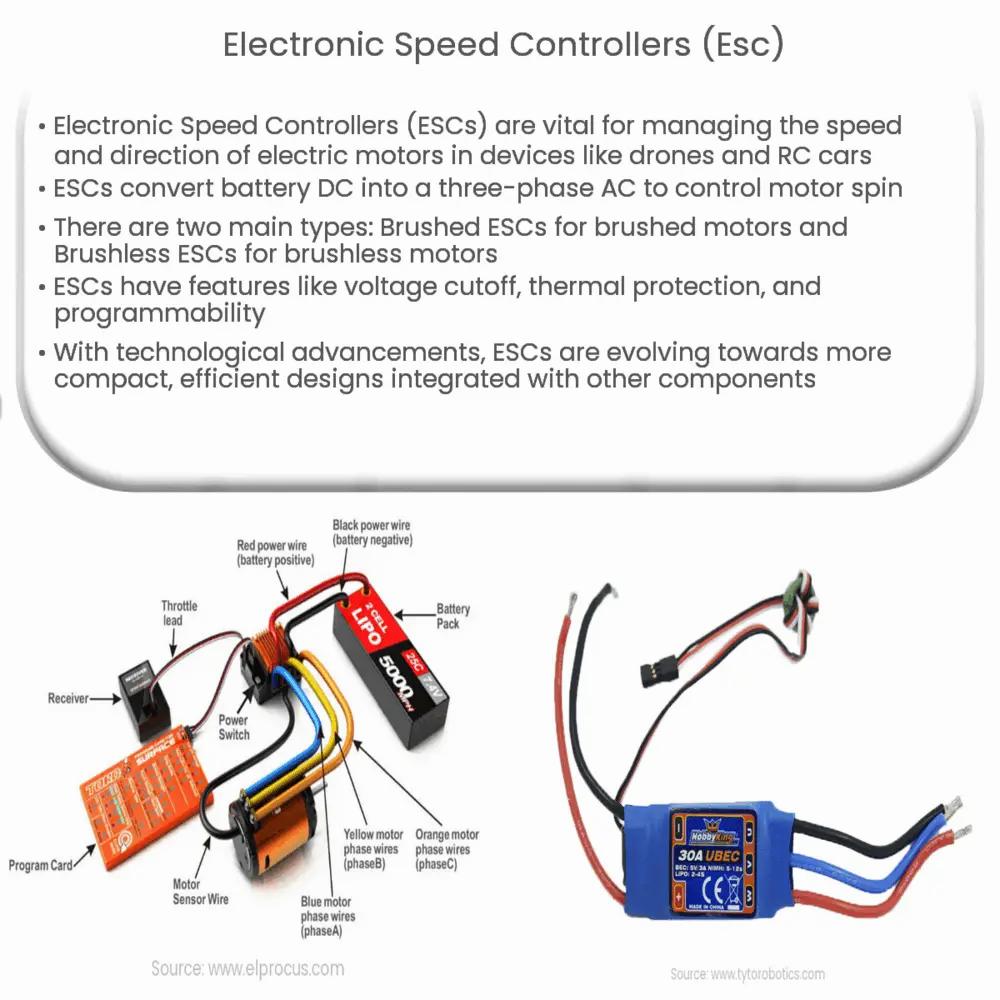
What are some devices that use electronic speed controllers?
Well, mate, let me fill you in on electronic speed controllers (or ESCs for short). These handy little devices are used in all kinds of fabulous gadgets. You know those drones you see whizzing about in the sky? Yup, they use ESCs to control the speed of their motors and perform those spectacular aerial maneuvers. And if you’re into RC cars, boats, or any other type of remote-controlled vehicles, you can bet your bottom dollar that they’re equipped with ESCs too. Heck, even your standard electric bicycle or skateboard has an ESC which assists the motor in giving you that smooth, seamless ride. They’re essentially the heart and soul, or the magic behind these devices we love so much. They communicate with the motor, telling it how fast or slow to go. It’s like having an intelligent, miniature co-pilot tucked away in your device, making every decision about speed sure-footedly and ensuring you have an awesome experience, without you even realizing it! Cool, isn’t it?
Key Differences Between Brushless and Brushed ESCs
Digging a bit deeper into the world of Electronic Speed Controllers (ESCs), you’ll find that they come in different shapes and sizes – figuratively speaking. Primarily, these can be categorized into two main types, namely, brushless and brushed ESCs. Both types boil down to the kind of motors they are made for, which are, you guessed it, brushless and brushed motors.
Let’s dissect this a bit. Brushless ESCs work using three wires, unlike their brushed counterparts, which use just two. Why does this matter, you ask? Well, brushless motors and hence brushless ESCs tend to be more efficient and longer-lasting. They’re commonly used in applications where longevity and performance are key – think drones or radio-controlled aircraft.
On the flip side, brushed ESCs, used with brushed motors, are generally cheaper but have a shorter lifespan. They’re a common choice for beginners or hobbyists who are dipping their toes into the world of RC vehicles.
The functionality between these two isn’t the only differentiating factor. While the backbone of what is electronic speed controller used for doesn’t change, the construction, cost, and specific application areas differ quite a lot. Interestingly, Hobbywing, a key player in the ESC market, offers a range of both brushless and brushed ESCs, catering to various user needs and budgets.
So next time you’re shopping for an ESC, remember, brushed or brushless isn’t just about the motor, but also the ‘brains’ that control them– the ESC. Understand your requirements, evaluate your options, and pick what suits your application the best.
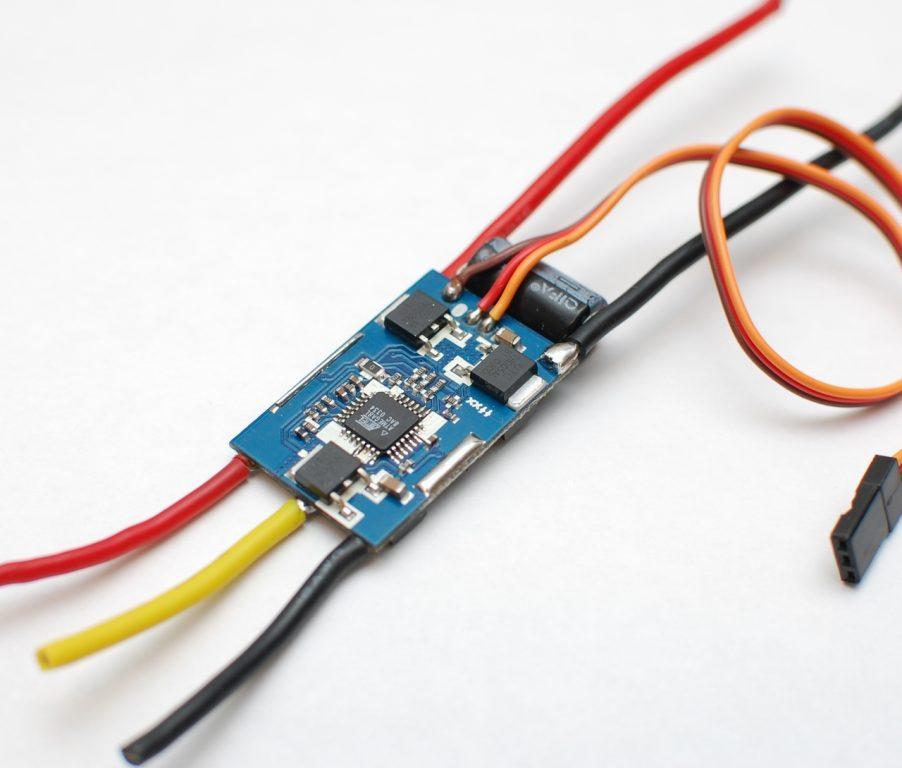
What are some specific application areas for brushless and brushed ESCs?
Brushless and brushed ESCs (Electronic Speed Controllers) have found their homes in a variety of application areas thanks to their exceptional adaptability. Brushless ESCs, which are game-changers for durability and efficiency, are often the top choice for high-performance activities. You’ll often see them expertly running the show in drones, powering through flight and enabling fantastic aerial photography. Brushless ESCs are also a key player in electric vehicles and high-speed boats – anywhere where refined control and longevity is needed. Now, let’s talk about the underdogs, the brushed ESCs. These guys might not shine as bright, but they have their own gig going. They are cost-effective and super easy to use, making them great for DIY robotics, RC cars, and model trains. To sum it up, whether we’re talking about flying high, cruising along, or tinkering at home, both brushless and brushed ESCs have immense value to offer.
Top Brands in the ESC Market
In the expansive ESC market, a few key players have managed to stand out from the crowd, thanks to their superior product offerings. Leading the pack is Hobbywing, a giant known for advanced technology and top-quality ESCs. They’ve built a solid reputation with customers due to their reliable and highly efficient controllers. Another top-notch manufacturer is Turnigy, who use premium material to ensure the durability and longevity of their ESCs.
The list doesn’t end there. We’ve got Castle Creations whose claim to fame comes from production of uniquely designed, versatile ESCs which go well beyond the ‘what is electronic speed controller used for’ textbook definition. These controllers are particularly loved by RC enthusiasts for their innovative software which enables customization and easy handling.
Last but definitely not least, we have Traxxas, who are legends in their own right. Their controllers are highly respected for speed control precision and contribute majorly to the performance of radio-controlled cars. It’s always fascinating to see these manufacturers pushing boundaries in design and functionality.
When shopping for ESCs, checking out the offerings from these major companies can help you make a smart purchase. Remember, the end goal is to find an ESC that meets your device-specific needs while offering excellent performance and durability.

What are the advantages of buying an ESC from a major manufacturer like Hobbywing or Turnigy?
Buying an ESC (Electronic Speed Controller) from a reputable manufacturer like Hobbywing or Turnigy has its own unique advantages. First of all, you’re investing in quality. Major manufacturers have a consistent track record of building reliable products that can stand the test of time. They use premium components, giving you value for your hard-earned money. There’s nothing worse than your ESC giving up halfway through an epic flight or race, right? To avoid that, it pays to opt for the best.
Secondly, companies like Hobbywing or Turnigy have excellent customer support. If you run into any issues or need some guidance, their expert teams are there to help. And trust me, that’s a lifesaver when you’re new to the game or haven’t quite gotten the hang of things.
Thirdly, their products are usually very user-friendly. Major manufacturers, having spent heaps of time understanding users’ needs, provide easy-to-understand instructions and often incorporate smart features designed to streamline your experience. So, even if you’re a newbie, you’ll feel like a pro in no time!
Lastly, let’s not forget the importance of good company reputation. In a world where counterfeit products are becoming increasingly common, buying from a well-known brand provides you an extra level of peace of mind. So, remember, investing in quality ESC from recognized brands is not just about making your device perform better – it’s also about ensuring a smooth, hassle-free experience.
Why ESC Compatibility and Performance Matters for Your Electronic Device
Choosing the right Electronic Speed Controller (ESC) for your needs can feel like a daunting task, but it doesn’t have to be. The first thing you need to consider is compatibility. Make sure the ESC you choose can work effortlessly with your RC car, drone, or electric bicycle motor. Next, take into account the current rating of the ESC – it’s essential that the ESC can handle the current pulled by your motor without breaking a sweat.
In terms of voltage, you want to ensure that your ESC can handle the voltage that your battery provides. It’s all about striking that Goldilocks balance – not too high, not too low but just right.
Finally, consider the performance. Your ESC should be responsive, offering smooth acceleration and deceleration, and have failsafe features to protect your motor. Let’s delve a little deeper into these important factors.
- Compatibility: The ESC should be suitable for the type of motor you’re using – be it brushed or brushless.
- Current Rating: As a rule of thumb, your ESC’s current rating should always be higher than the current your motor will pull. This ensures your ESC won’t overheat or fail.
- Voltage: The voltage of your ESC must match the voltage of your battery. Too high or too low could lead to poor performance or even damage.
- Performance: Look for an ESC that handles acceleration and deceleration smoothly and includes safety features like thermal overload protection and low-voltage cutoff.
Informative websites like RCHelicopterFun.com provide helpful guides on understanding ESC specifications and choosing the right ESC for your project.
So, when pondering over ‘what is electronic speed controller used for’, remember that choosing the right ESC is all about understanding your electronic device’s needs. Get these right, and your ESC will ensure your motor runs smoothly and efficiently. Happy tinkering!
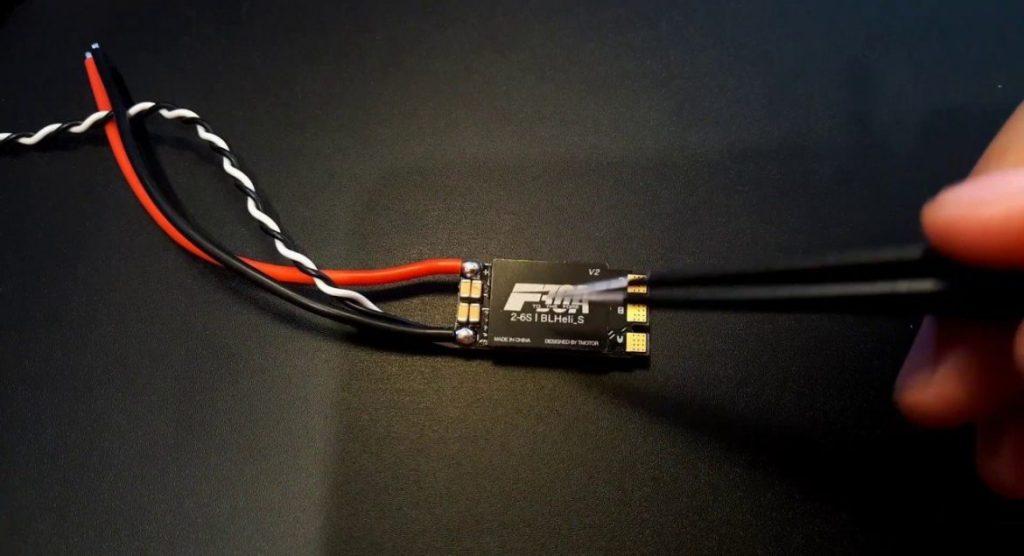
What factors should be considered when choosing an appropriate Electronic Speed Controller (ESC)?
Choosing an appropriate Electronic Speed Controller (ESC) can feel like a complex task, especially if it’s your first time. Motor type, operating voltage, and current capacity are the key factors to keep in mind. Make sure your ESC is compatible with the type of motor you’re using – brushed or brushless.
Beyond that, it’s worth considering the voltage range supported by the ESC. It needs to match the power source you’re working with, be it a battery, solar panel, or something else. Don’t forget about the critical current rating, my friends! If your setup draws more current than the ESC can handle, you’re in for a meltdown, literally.
On a more personal note, I’ve always believed in considering safety features too. Look for things like thermal protection, low-voltage cutoff, and brake settings. They might just save your motor, and your day. Remember, your choice of ESC will affect the performance and efficiency of your setup in a big way. So, take a deep breath, consider these factors, and choose wisely. Trust me, it’ll be worth it!
Without a doubt, the past few years have witnessed an incredible evolution in the design and function of Electronic Speed Controllers (ESCs). As we put the pedal to the metal on understanding what is electronic speed controller used for, we’ve seen their primary operation shift, becoming increasingly refined and efficient. This evolution is largely driven by the advancements in drone technology, as the surge in drone usage demands ESCs designed for precision, longevity, and power.
There’s also a peek into the future. Emerging trends suggest we may be on the cusp of seeing ESCs with features like regenerative braking, which promote energy conservation – a significant stride towards making our electronic gadgets even more eco-friendly. This could potentially be the game-changer in terms of energy saving in the world of esports and electronic devices at large.
Bottom line: the story of ESCs is far from over. Isn’t it exciting to think what tomorrow might bring? Whether you’re a drone enthusiast, an RC car racer or an ebiker, the developments in ESC technology are bound to revolutionize your experience. As the tech continues to evolve, it’s crucial to gear up and stay up-to-date, ensuring you get the maximum punch from your ESC. After all, to borrow from Bob Dylan’s famous song: The times, they are a-changin’. So, the question remains: Are you ready to change with them?

